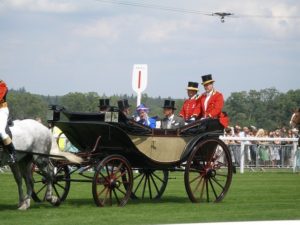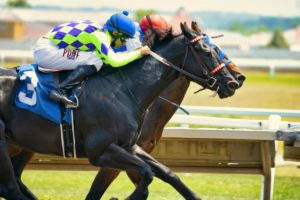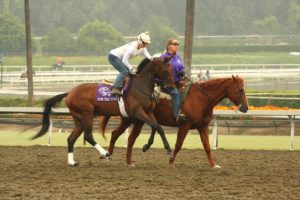What’s the history of Royal Ascot?
 Ascot Racecourse is, of course, situated in the Royal County of Berkshire, South East England, which is, in fact, the only English county to warrant the ‘Royal’ epithet. Berkshire has been closely associated with the British monarchy for nearly a millenium, not least because of the presence of Windsor Castle, originally constructed by William I, a.k.a. ‘William the Conqueror, in the late eleventh century and a royal residence pretty much ever since.
Ascot Racecourse is, of course, situated in the Royal County of Berkshire, South East England, which is, in fact, the only English county to warrant the ‘Royal’ epithet. Berkshire has been closely associated with the British monarchy for nearly a millenium, not least because of the presence of Windsor Castle, originally constructed by William I, a.k.a. ‘William the Conqueror, in the late eleventh century and a royal residence pretty much ever since.
As far as Ascot Racecourse is concerned, the association with the British Royal Family is nowhere near so lengthy, but still dates back to the reign of the much-maligned Queen Anne, in the first half of the eighteenth century. In fact, three years before her death, aged 49, in 1714 – apparently, after succumbing to ‘gout, dropsy, hemorrhage and stroke’ – ‘Brandy Nan’, as she was known, identified Ascot Heath as a likely location for ‘horses to gallop at full stretch’. That they did, for the first time, on August 11, 1711, with the inaugural running of Her Majesty’s Plate, contested over three separate heats, of four miles apiece.
It was not until 1794, during the reign of King George III, that the first permanent building was raised on Ascot Heath, while the first reference to a Royal Stand, albeit temporary, also dates back to the same decade. However, the Royal Enclosure, which originally consisted of a two-storey, permanent grandstand surrounded by a lawn, was decreed by King George IV in 1822 and did not officially become known as such until 1845; by that stage, it had already been further developed for the inaugural visit of Tsar Nicholas I, as a guest of Queen Victoria, the previous summer.
King George IV also began the tradition of the Royal Parade, or the Royal Procession, as it is now known, in 1825. At two o’clock each afternoon, the reigning monarch and the Royal party arrive at the so-called Royal Gates, at the top of the Straight Mile, and process along the track in front of the racegoers, who can number up to 70,000, to the Royal Enclosure.
The Gold Cup, which, nowadays, forms the highlight of the third day of the Royal Meeting, a.k.a. Ladies’ Day, was inaugurated in 1807, making it the oldest surviving race of the week. Indeed, the Gold Cup, remains one of just three perpetual trophies presented during Royal Ascot.
Indeed, it was the establishment of the Gold Cup that, in many ways, laid the foundation for Royal Ascot as we know it today. The traditional, four-day, Tuesday to Friday format had been in place since 1768, but the meeting did not earn the ‘Royal’ epithet until 1911 and, until 1939, remained the only fixture of the year at the Berkshire track.
Fast forward to the early years of the twenty-first century and, in 2002, the four-day Royal Ascot meeting was extended to five days, by way of celebrating the Golden Jubilee of Queen Elizabeth II. Hitherto, Royal Ascot had been immediately followed by a less formal fixture, without a Royal presence, on the Saturday. However, the new format proved hugely successful, such that the ‘Ascot Heath’ Meeting, as was, ceased to be and the Royal Meeting has continued as a five-day affair ever since.
In 2013, an unusual situation occurred insofar as the winner of the Gold Cup was owned by the late Queen Elizabeth II, who thereby became the first reigning monarch in history to win the ‘flagship’ race of the week. Obviously, Her Majesty could not present the Gold Cuo trophy to herself, so instead took delight in receiving it from her son Prince Andrew, Duke of York.
 Back in the day, I remember saying I would never watch YouTube.
Back in the day, I remember saying I would never watch YouTube. Having never worked with horses but an avid horse racing fan from the days of watching the Brocklesby Stakes as a kid, I’m definitely a novice when it comes to racehorse tack. Collectively known as the tack, it includes all the various pieces of equipment to help a horse and jockey perform at their best and safely.
Having never worked with horses but an avid horse racing fan from the days of watching the Brocklesby Stakes as a kid, I’m definitely a novice when it comes to racehorse tack. Collectively known as the tack, it includes all the various pieces of equipment to help a horse and jockey perform at their best and safely.